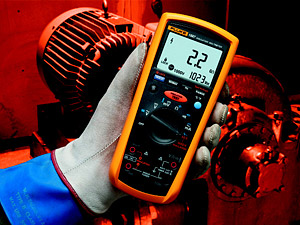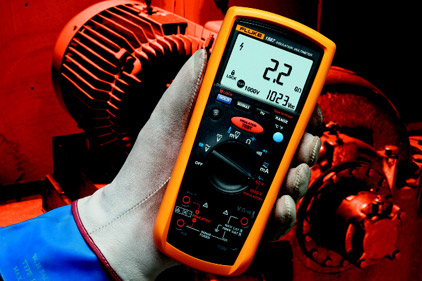 In the warm summer season, cooling equipment operates at near peak capacity. If that equipment is used for critical building functions, any equipment downtime for whatever reason is unacceptable.
In the warm summer season, cooling equipment operates at near peak capacity. If that equipment is used for critical building functions, any equipment downtime for whatever reason is unacceptable.At the most sensitive end of the spectrum, hospitals rely on their central cooling systems for critical patient care areas, such as operating and emergency rooms. If cooling is lost, subpar environmental conditions could threaten patient health and either prevent procedures from being scheduled, or create a potential liability.
More commonly, many commercial and light manufacturing buildings now have in-house data centers full of servers. These servers might be responsible for critical information, such as personal information, real-time financial transactions, or airplane tickets. They also generate large amounts of heat, which either must be dissipated or offset with cool air. A loss of chilled-water cooling capacity for even a few minutes could cause a server room to shut down.
In the vast majority of hospital and data center systems, the cooling is provided by a number of water chillers, pumps, and cooling towers. The water chillers might be centrifugal, screw, or scroll construction. Most commonly, a number of centrifugal chillers provide redundancy and step capacity.
Chillers, pumps, and tower fans all utilize three-phase motors to move water, move air, or compress refrigerant. The failure of any of these motors can threaten the operation of the entire system.
It is very important that all motors are thoroughly checked out before being put into service for the cooling season. Emergency service is available, but it is enormously expensive. Rates of $250/hour/person on nights and weekends are not unheard of, with transportation and parts costs adding additional expense.
A number of diagnostic tests can and should be run on chiller plants before seasonal start up, but checking the motor resistance with an insulation tester is vital. The insulation tester passes a high voltage through the individual motor windings while measuring the winding resistance. Low resistance indicates that the winding has deteriorated and might fail after the device is placed into service.
Do This
In general, using an insulation tester involves the following steps:
1. Wear personal protective equipment (PPE) and obey safety rules at all times. Place safety glasses over your eyes (not around your neck or on your forehead).
Note: Disconnect and remove all power sources to the motor before attempting any type of repair. Follow lockout-tagout procedures. Double-check by using your multimeter to ensure that all power is shut off.
2. Remove the screws that hold the wire connection cover in place from the motor; set aside. Detach the power wires from the motor wires; you might want to identify the pairs with labels or numbers so you can maintain proper rotation, especially in three-phase motors.
Commonly, the device must be at room temperature for a minimum of 24 hours before you should run the test. Also, make sure that the motor is not in a vacuum when the insulation testing is done; this might destroy the motor.
3. Attach one lead of the insulation tester to one of the motor wires, and the other to the motor ground or metal case. Turn on the meter or crank the handle. The meter’s manufacturer should have reference readings for each meter. Generally, a reading above 20 to 30 megohms should be sufficient to run most motors.
New motors should read greater than 999 megohms; readings less than this indicate deterioration of the winding insulation.
4. Test each motor winding in turn; record each set of windings, per the megohm reading. Some insulation testers can log the data to a laptop for future reference. If one of the legs has a very low reading, the motor should be replaced. This will also result in a high amp draw or constantly blown fuses. Many manufacturers provide a chart with the proper readings.
Which motors in the chiller plant should be tested? All of them, or as many as possible; chiller and pump motors at a minimum, and it should include chiller oil pump and cooling tower fan motors. If either of these fail, they could cause the entire chiller system to fail.
The bottom line is that testing motor insulation will identify problems in time to fix them, while they’re still reparable and before they cause excessive damage.
Publication date: 08/29/2011


Report Abusive Comment